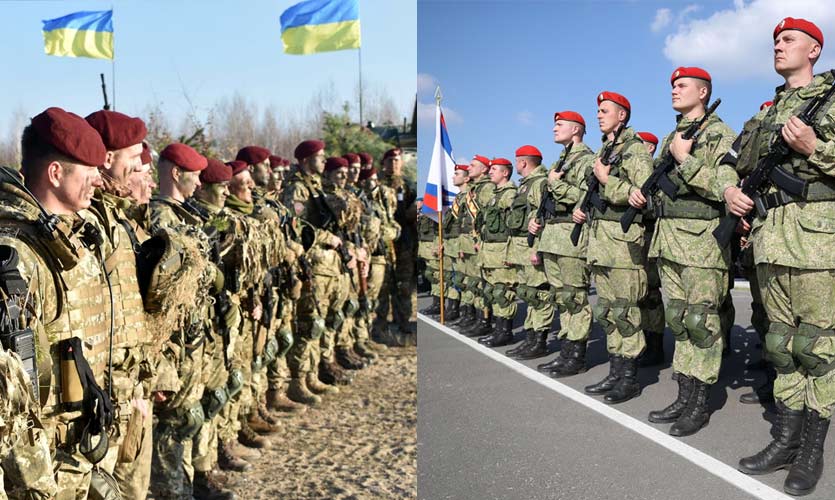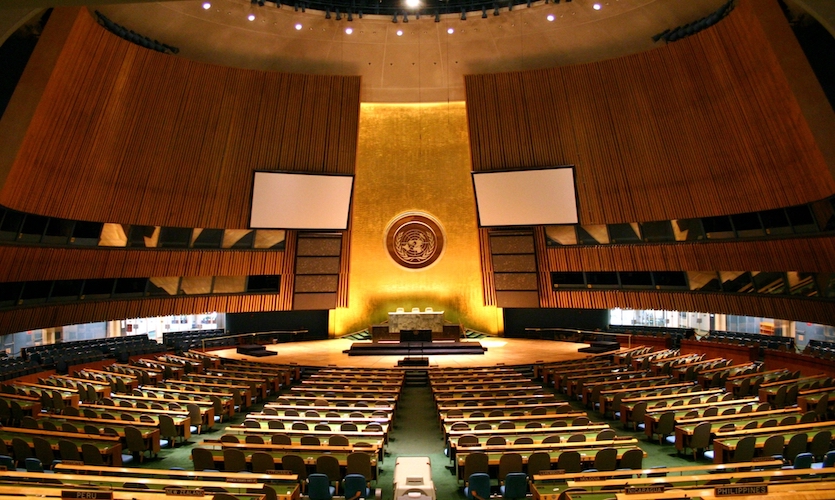For weeks, Russian President Vladimir Putin has been building up his arsenal of rockets and missiles at the borders of Ukraine. Russian missiles are among the most advanced in the world.
According to the Stockholm International Peace Research Institute (SIPRI) that tracks global arms trade, Russia’s military expenditures in 2020 totalled US$61.7 billion. This is over ten times more than that of Ukraine’s expenditures of US$ 5.9 billion. In a 2006 report released by Global Fire Power, which analyses the military capabilities of countries throughout the world, Russia is ranked the second-most powerful out of 140 nations, while Ukraine is ranked 22.
According to the Centre for Strategic and International Studies (CSIS), Russia has deployed roughly 190,000 conventional and irregular ground, naval and air force troops to Ukraine, and approximately 50,000 Belarusian soldiers. In the last few weeks, Russia’s military presence around Ukraine has grown to 105 battalion tactical groups (BTGs). In addition to having their own artillery system, air defence systems, and logistics systems, BTGs have between 600 and 1,000 troops, 500 combat aircraft, and 40 combat ships stationed in the Black Sea. Russia has deployed around 500 combat aircraft within striking distance of Ukraine. The number of active personnel in Russia is nearly 850,000, more than three times that of Ukraine. The total number of Russian aircraft is more than 4,100, which includes 772 fighters. Ukraine has only 318 aircraft, including 69 fighters.
In terms of ground forces, the Russians reportedly have nearly 12,500 tanks, and more than 30,000 armoured vehicles, whereas the Ukrainians have around 2,600 tanks and 12,000 armoured vehicles. Russia possesses around 14,000 towed and self-propelled artillery guns, while Ukraine has just over 3,000.
Compared to Ukraine’s 38 naval vessels, the Russian navy has more than 600 vessels, including an aircraft carrier. Russia has 70 submarines with stealth capabilities in the sea, while Ukraine has zero.
According to the CSIS report, Russia has demonstrated a significant ground presence in areas such as Brest, Pinsk, Mazyr, Yelsk, Rechytsa, and Gomel in Belarus (including troops and personnel from the Eastern Military District and 98th Airborne Division); Klintsy, Klimovo, Unecha, and Pochep in Russia’s southern Bryansk region (including elements of the 90th Tank Division and 41st Combined Arms Army); Postoyalye Dvory, Ve (including elements of the 58th Combined Arms Army and 49th Army of the Southern Military District). Furthermore, Moscow has prepared Russian air and naval forces to support military operations in Ukraine. It has deployed Ka-52 and Mi-28 attack helicopters, S-400 anti-aircraft missile systems, Mi-26 and An-26 transport helicopters, and MiG-29 fighter aircraft at the Dzhankoi air base in Crimea.
Additionally, Russia’s intelligence services, special operations forces, and Russian-backed separatists could conduct extensive irregular operations in Ukraine and against the West, including cyber, disinformation, psychological, subversion, and sabotage.
Ukraine had previously been acquiring anti-tank missiles from the United States. It has been given hundreds of Javelin missiles since December 2021, which can be used to target Russian tanks. This is a man-portable, fire-and-forget anti-tank missile, which means that a soldier can fire it from his shoulder, and its automatic infra-red guidance system will target tanks from above, which is their weakest point.
As reported by the New York Times, the United States has committed over US$2.7 billion to Ukraine in security assistance since 2014, including a US$200 million package last December that included Javelin anti-armour systems, grenade launchers, large quantities of artillery, mortars and small-arms ammunition. Moreover, approximately 18,000 guns with ammunition have been distributed to reservists in the Kyiv region alone, according to Ukrainian authorities.
Oleksii Reznikov, Ukraine’s defence minister, tweeted details of the incoming military supplies from various western countries, which included the Javelin missiles, the man-portable Stinger missiles, tons of ammunition, rifles, machine guns with optical sights, night vision and surveillance equipment, and other military equipment. Reznikov had tweeted about the arrival of 90 tonnes of US ammunition on February 11. He said that by then the total military aid had reached over 1,300 tonnes.
Read more: Ukraine Reports Full-Scale Russian Invasion
The overthrow of Ukraine’s government by Russia through conventional or irregular means would be a landmark event, with implications that extend far beyond Ukraine. A Russian incursion into eastern Ukraine, in coordination with Russian-backed separatists, short of a full-scale invasion, is also a serious concern. Authoritarianism gaining momentum after 15 consecutive years of declining democracy is an inevitable reality taking shape fast. After Afghanistan’s fall to the Taliban last year, following a hasty NATO exit, Ukraine would become the second democracy to fall within less than a year. The illiberalism at the root of the Russian, Chinese, and other systems is antithetical to Western enlightenment values. These regimes eschew the freedom of the press, religion, free markets, and democracy.
A Russian invasion could also place Russian forces close to countries that are part of the North Atlantic Treaty Organization (NATO) such as Poland, Slovakia, Hungary, and Romania. Russian successes in Ukraine would likely embolden Chinese leaders and highlight a declining West. According to the Indian Express, as their land forces advance, they can use their missiles to incapacitate Ukraine’s air defences, seize key infrastructure sites such as ports and airports, and overwhelm Ukraine’s forces and infrastructure.










